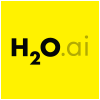Schedule: Deep Learning tools sessions
9:00am-5:00pm Tuesday, September 4 & Wednesday, September 5
Location: Continental 2
 Robert Schroll (The Data Incubator)
Robert Schroll (The Data Incubator)
Average rating:





(4.00, 2 ratings)
The TensorFlow library provides for the use of dataflow graphs for numerical computations, with automatic parallelization across several CPUs or GPUs. This architecture makes it ideal for implementing neural networks and other machine learning algorithms. Robert Schroll offers an overview of the TensorFlow graph using its Python API.
Read more.
9:00am-5:00pm Tuesday, September 4 & Wednesday, September 5
Location: Continental 1
 Rich Ott (The Pragmatic Institute)
Rich Ott (The Pragmatic Institute)
Average rating:





(5.00, 1 rating)
BigDL is a powerful tool for leveraging Hadoop and Spark clusters for deep learning. Rich Ott offers an overview of BigDL’s capabilities through its Python interface, exploring BigDL's components and explaining how to use it to implement machine learning algorithms. You'll use your newfound knowledge to build algorithms that make predictions using real-world datasets.
Read more.
9:00am-5:00pm Tuesday, September 4 & Wednesday, September 5
Location: Continental 3
 Delip Rao (AI Foundation)
Delip Rao (AI Foundation)
Delip Rao explores natural language processing with deep learning, walking you through neural network architectures and NLP tasks and teaching you how to apply these architectures for those tasks.
Read more.
9:00am-12:30pm Wednesday, September 5, 2018
High-resolution land cover maps help quantify long-term trends like deforestation and urbanization but are prohibitively costly and time intensive to produce. Mary Wahl and Banibrata De demonstrate how to use Microsoft’s Cognitive Toolkit and Azure cloud resources to produce land cover maps from aerial imagery by training a semantic segmentation DNN—both on single VMs and at scale on GPU clusters.
Read more.
9:00am-12:30pm Wednesday, September 5, 2018
Average rating:





(2.50, 2 ratings)
From social network photo filters to self-driving cars, computer vision has brought applied deep learning to the masses. Built by the pioneers of computer vision software, PyTorch enables developers to rapidly build computer vision models. Mo Patel and David Mueller offer an overview of computer vision fundamentals and walk you through using PyTorch to build computer vision applications.
Read more.
9:00am-5:00pm Wednesday, September 5, 2018
 Carl Osipov (Google)
Carl Osipov (Google)
Average rating:





(3.00, 2 ratings)
Carl Osipov walks you through creating increasingly sophisticated image classification models using TensorFlow.
Read more.
1:30pm-5:00pm Wednesday, September 5, 2018
 David Arpin (Amazon Web Services)
David Arpin (Amazon Web Services)
Average rating:





(4.00, 2 ratings)
David Arpin offers an overview of the Amazon SageMaker machine learning platform, walking you through setup and using Amazon SageMaker Notebook (a hosted Jupyter Notebook server). You'll get hands-on experience with SageMaker's built-in deep learning algorithm as you dive into building your own neural network architecture using SageMaker's prebuilt TensorFlow containers.
Read more.
11:05am-11:45am Thursday, September 6, 2018
Location: Continental 7-9
 Neta Zmora (Intel AI Lab)
Neta Zmora (Intel AI Lab)
Neta Zmora offers an overview of Distiller, an open source Python package for neural network compression research. Neta discusses the motivation for compressing DNNs, outlines compression approaches, and explores Distiller's design and tools, supported algorithms, and code and documentation. Neta concludes with an example implementation of a compression research paper.
Read more.
11:55am-12:35pm Thursday, September 6, 2018
Average rating:





(3.00, 1 rating)
Magnus Hyttsten and Priya Gupta demonstrate how to perform distributed TensorFlow training using the Keras high-level APIs. They walk you through TensorFlow's distributed architecture, how to set up a distributed cluster using Kubeflow and Kubernetes, and how to distribute models created in Keras.
Read more.
4:00pm-4:40pm Thursday, September 6, 2018
 Sarah Bird (Facebook)
Sarah Bird (Facebook)
Average rating:





(2.67, 3 ratings)
Earlier this year, Amazon, Facebook, and Microsoft partnered to create the Open Neural Network Exchange (ONNX)—an open format to represent deep learning models. Sarah Bird explains in detail how the ONNX framework can help you take AI from research to reality as quickly as possible.
Read more.
11:05am-11:45am Friday, September 7, 2018
 Joseph Spisak (Facebook)
Joseph Spisak (Facebook)
Average rating:





(1.33, 3 ratings)
Facebook's strength in AI innovation comes from its ability to quickly bring cutting-edge research into large-scale production using a multifaceted toolset. Joseph Spisak explains how PyTorch 1.0 helps to accelerate the path from research to production by making AI development more seamless and interoperable.
Read more.
11:55am-12:35pm Friday, September 7, 2018
Location: Continental 7-9
 Cormac Brick (Intel)
Cormac Brick (Intel)
In recent years, there has been lots of work done on low-precision inference that shows that by training for quantization, large gains in energy efficiency can be achieved. Cormac Brick offers a look at industry challenges and progress needed to close the portability performance gap.
Read more.
1:45pm-2:25pm Friday, September 7, 2018
 Neil Tan (ARM)
Neil Tan (ARM)
Would you believe that AI inferencing can be done on chips that cost less than a dollar? uTensor, a custom TensorFlow runtime for microcontrollers (MCUs), lets you do just that. Neil Tan offers an overview of uTensor, the first framework to streamline model deployments on MCUs, allowing you to push AI to the edge rather than sending everything to the cloud.
Read more.
Presented by
Elite Sponsors
Strategic Sponsors
Knowledge Sponsor
Contributing Sponsors
Exabyte Sponsors
Impact Sponsors
Supporting Sponsor
Community Partners
Sponsorship Opportunities
For exhibition and sponsorship opportunities, email aisponsorships@oreilly.com
Partner Opportunities
For information on trade opportunities with O'Reilly conferences, email partners@oreilly.com
Contact Us
View a complete list of AI contacts
©2018, O'Reilly Media, Inc. • (800) 889-8969 or (707) 827-7019 • Monday-Friday 7:30am-5pm PT • All trademarks and registered trademarks appearing on oreilly.com are the property of their respective owners. • confreg@oreilly.com













